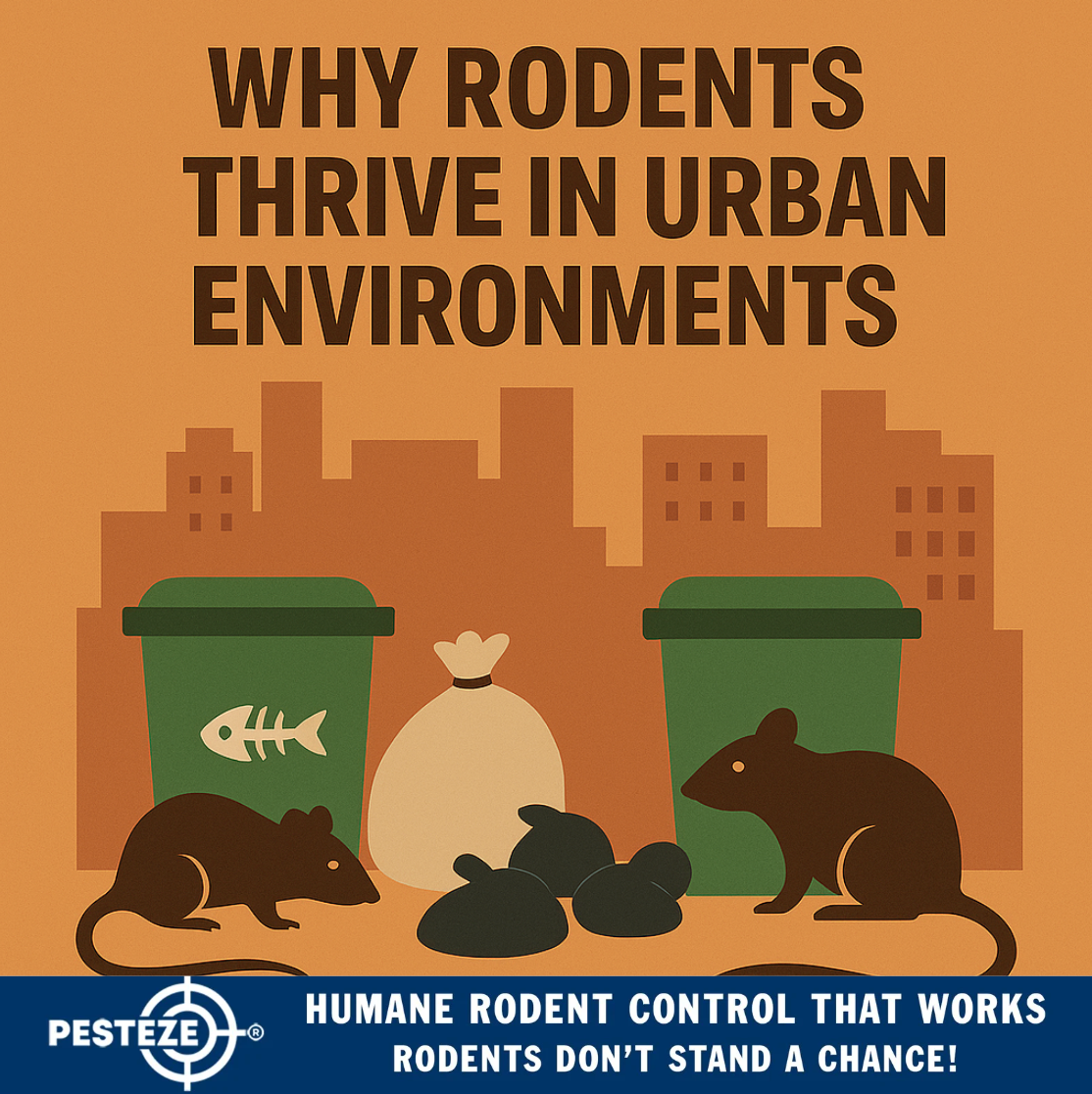WHY RODENTS THRIVE IN URBAN ENVIRONMENTS

WHY RODENTS THRIVE IN URBAN ENVIRONMENTS
SUMMARY
Rodents have adapted perfectly to life in cities, finding shelter, food, and water in abundance. This guide explains why urban settings attract them and how to keep them out of your home or business.
FEATURES
-
Abundant Food Sources: Trash, pet food, and litter offer constant nourishment.
-
Shelter Opportunities: Buildings, sewers, and alleys provide warm nesting spots.
-
Cluttered Environments: Storage areas and debris create ideal hiding places.
-
Human Activity: Late-night food waste and poor sanitation attract rodents.
-
Rapid Reproduction: City rodents breed faster due to steady resources.
-
Weak Infrastructure: Cracks, drains, and utility gaps serve as entry routes.
DESCRIPTION
Cities provide an ideal ecosystem for rodents to thrive. Unlike rural areas, urban environments offer constant food, warmth, and shelter—all critical for rodent survival. Overflowing trash bins, discarded food near restaurants, and pet feeding areas serve as reliable food sources. This easy access encourages rodents to nest close to human activity, often just feet away from homes and businesses.
Urban structures such as old buildings, basements, sewers, and subway tunnels act as a vast shelter network. Cracks in walls, open vents, and drainage systems provide direct access indoors. Once inside, rodents create hidden nests in insulation, under appliances, or behind walls—locations rarely disturbed by humans.
Clutter is another factor that contributes to their success. Stacked boxes, storage units, and debris piles give rodents safe spaces to breed and move undetected. Combined with poor sanitation or irregular garbage collection, these conditions allow infestations to grow rapidly.
Rodents in cities also reproduce faster because of the steady supply of resources. A single pair of rats can produce hundreds of offspring in one year. Weak infrastructure, such as broken drains or unsealed utility lines, gives them multiple ways to enter buildings.
Preventing urban rodent problems requires a mix of sanitation, maintenance, and exclusion strategies. Regular trash disposal, sealing entry points, and minimizing clutter are essential for making city spaces less inviting to rodents.
- Saharsh Bansal


Comments 0